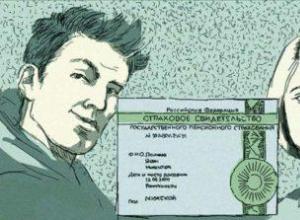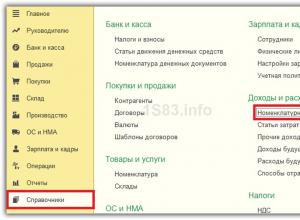When Prokofiev wrote Romeo and Juliet. How the ballet “Romeo and Juliet” by Prokofiev was created. Two high-profile premieres
Ballet in three acts.
Choreography and staging Natalia Kasatkina and Vladimir Vasilyov.
Libretto Natalia Kasatkina and Vladimir Vasilyov based on Shakespeare's tragedy and Sergei Prokofiev's script.
Artist - Joseph Sumbatashvili.
The duration of the performance is 2 hours 45 minutes.
One of the most popular ballets in the world of the twentieth century, which united the geniuses of Shakespeare and Prokofiev... Today it is impossible to imagine that the great ballerina Galina Ulanova, the first performer of the role of Juliet, is credited with words that are offensive to the composer: “There is no sadder story in the world than music Prokofiev in ballet…” The power, scale and strength of this music were so unusual for its time that even outstanding artists seemed impossible to translate it into plastic. But history has put everything in its place. The ballet “Romeo and Juliet” adorns the posters of leading ballet companies around the world.
Staging “Romeo and Juliet” was a long-time dream of choreographers Natalia Kasatkina and Vladimir Vasiliev. Their version, performed in the genre of choreographic fantasy, is recognized as one of the most successful interpretations of the great ballet. It brings back to memory the unforgettable creations of the masters of the Italian Renaissance. The choreographic solution of this bright performance combines the scale of the Renaissance fresco with the subtle psychologism of the art of the 20th century.
“In our production, we sought to get as close as possible to Shakespeare’s original source, to not miss anything when translating the work of the great English playwright into the language of choreography,” say the choreographers. - We were equally attracted by the romantic images of the main characters of the ballet, and the genre figures of the servants, and the grotesque characters of the folk carnival, in a word, Verona close-up. In our production, Romeo and Juliet are not initially exceptional individuals at all. What makes them exceptional are their feelings, fortitude, and intensity of passion. Shakespeare's play seems very modern to us. All her characters are worthy of love, but the irresistible power of ossified traditions leads to tragedy. People must find the strength to escape from the cruel trap of false ideas.”
The performance provides the public with the opportunity to get acquainted with several leading ballerinas and dancers of the troupe in one evening - so significant and choreographically inventive are the parts not only of the main characters, but also of such characters as Tybalt, Mercutio, Signor Capulet, Signora Capulet, the Nurse, the maid Nellie, the father Lorenzo...
Romeo and Juliet - Libretto
Romeo Montague, a young man from Verona, is in love with the beautiful lady Rosaline, which, however, does not prevent him from participating in the cheerful antics of his friends Mercutio and Benvolio, or in street skirmishes between representatives of two warring families - the Montagues and the Capulets. This enmity has already claimed more than a dozen lives. So another fight occurs early in the morning - the squabble of the servants turns into a serious fight, in which their masters also take part. The Duke of Verona, after a futile attempt to reconcile the heads of the warring families, announces that from now on the perpetrators of the bloodshed will pay for it with their lives.
Instructions
Although composers and musicians began to turn to the love story of Romeo and Juliet back in the 18th century, the first famous work based on Shakespeare’s tragedy was written in 1830. It was Vincenzo Bellini's opera "Capulets and the Montagues". It is not at all surprising that the Italian composer was attracted by the story that took place in Verona, Italy. True, Bellini somewhat departed from the plot of the play: Juliet’s brother dies at the hands of Romeo, and Tybalt, named Tybaldo in the opera, is not a relative, but the girl’s fiancé. It is interesting that Bellini himself at that time was in love with the opera diva Giuditta Grisi and wrote the role of Romeo for her mezzo-soprano.
In the same year, the French rebel and romantic Hector Berlioz attended one of the opera performances. However, the calm sound of Bellini's music caused him deep disappointment. In 1839, he wrote his Romeo and Juliet, a dramatic symphony with lyrics by Emile Deschamps. In the 20th century, many ballet performances were staged to Berlioz's music. The ballet “Romeo and Julia” with choreography by Maurice Bejart received the greatest fame.
In 1867, the famous opera “Romeo and Juliet” by the French composer Charles Gounod was created. Although this work is often ironically called “a complete love duet,” it is considered the best operatic version of Shakespeare’s tragedy and is still performed on the stages of opera houses around the world.
Among those few listeners for whom Gounod's opera did not cause much delight was Pyotr Ilyich Tchaikovsky. In 1869, he wrote his work on a Shakespearean plot, it became the fantasy “Romeo and Juliet”. The tragedy captured the composer so much that at the end of his life he decided to write a great opera based on it, but, unfortunately, he did not have time to realize his grandiose plan. In 1942, the outstanding choreographer Serge Lifar staged a ballet to the music of Tchaikovsky.
However, the most famous ballet based on the plot of Romeo and Juliet was written in 1932 by Sergei Prokofiev. His music at first seemed “undanceable” to many, but over time Prokofiev managed to prove the viability of his work. Since then, the ballet has gained enormous popularity and, to this day, does not leave the stage of the best theaters in the world.
On September 26, 1957, the premiere of Leonard Bernstein's musical West Side Story took place on the stage of one of the Broadway theaters. Its action takes place in modern New York, and the happiness of the heroes, “Native American” Tony and Puerto Rican Maria, is ruined by racial hostility. However, all the plot moves of the musical very accurately repeat the Shakespearean tragedy.
The music of the Italian composer Nino Rota, written for the 1968 film by Franco Zeffirelli, became a kind of musical calling card of “Romeo and Juliet” in the 20th century. It was this film that inspired the modern French composer Gerard Presgurvic to create the musical Romeo and Juliet, which has gained enormous popularity, which is also well known in the Russian version.
Two equally respected families
In Verona, where events meet us,
There are internecine fights
And they don’t want to stop the bloodshed.
The children of the leaders love each other,
But fate plays tricks on them,
And their death at the grave doors
Puts an end to irreconcilable strife.
W. Shakespeare
Romeo Montague, a young man from Verona, is in love with the beautiful lady Rosaline, which, however, does not prevent him from participating in the cheerful antics of his friends Mercutio and Benvolio, or in street skirmishes between representatives of two warring families - the Montagues and the Capulets. This enmity has already claimed more than a dozen lives. So another fight occurs early in the morning - the squabble of the servants turns into a serious fight, in which their masters also take part. The Duke of Verona, after a futile attempt to reconcile the heads of the warring families, announces that from now on the perpetrators of the bloodshed will pay for it with their lives.
In the Capulet house, Juliet's nurse is trying to wake up her favorite. Juliet is naughty and disobeys. Juliet's parents, Signor and Signora Capulet, enter and remind the girl that she is already an adult and at the upcoming ball she will meet her groom, Count Paris.
Ladies and knights dance at the ball. Romeo and his friends also sneak into the ball. Having accidentally encountered each other in the ballroom, Juliet and Romeo realize that they fell in love with each other at first sight.
The warlike Tybalt, Juliet's cousin, recognizes Romeo as a representative of a hostile family.
Romeo and Juliet meet at night and talk about their love.
During the carnival, Juliet and Romeo, through the nurse, agree to get married secretly. They ask Friar Lorenzo to help them. Lorenzo performs the marriage ceremony in the hope that the union of Juliet and Romeo can end the deadly feud between the two families.
In the carnival bustle, Tybalt and Mercutio come face to face. Both are happy to use the slightest reason for a quarrel, which quickly turns into a sword fight. Romeo tries in vain to separate the opponents. From under Romeo's hand, Tybalt mortally wounds Mercutio. The crowd mourns the death of everyone's favorite Mercutio.
Romeo rushes after Tybalt to avenge his friend's death and kills him after a long, fierce struggle. Juliet, running out to the noise of the battle, sees the death of her cousin. Lorenzo drags Romeo along with him to save him from the Duke's wrath.
At dawn the next day, Romeo says goodbye to Juliet and leaves Verona. Juliet's parents try in vain to force her to marry Paris. Juliet is in despair. Lorenzo offers her a plan - Juliet will drink a drink that will plunge her into a deep sleep, similar to death. Meanwhile, Lorenzo will let Romeo know about this, Romeo will enter the Capulet family crypt just in time for Juliet to awaken in order to take her away from Verona forever. Juliet gives her parents consent to marry Paris and drinks the drink.
The cheerful preparations for the wedding are disrupted by the sorrowful cries of the nurse, who discovered the dead Juliet in the bedroom. The funeral procession heads to the crypt. The news of Juliet's death reached Romeo before the news from Lorenzo. Romeo enters the crypt, says goodbye to Juliet and takes his own life. The awakened Juliet sees his lifeless body. Life without a loved one has no meaning for Juliet. She plunges Romeo's sharp dagger straight into her heart.
Only over the bodies of their children do they forget about the bloody feud between the heads of the Montague and Capulet families.
PROLOGUE
Every person has their own ray of light in life. The rays look for each other, sometimes they meet, sometimes they separate. In their glow the heroes of the play appear: Juliet, Tybalt, Mercutio, Romeo.
I ACT
Romeo is alone. The young man dreams of romantic love.
Verona Square.
Residents of the city (among them acrobats, a flower girl, servants and maids, merchants) joyfully unite in a common dance. But at the same time, in a city where the two wealthy families of Capulets and Montagues have been feuding for decades, a quarrel can easily break out. And now it has already turned into a real battle, which brings the loss of loved ones, the pain of loss. The pleas of wives and mothers are unable to stop the fighting men. In the midst of the fight, Tybalt appears - Capulet's beloved nephew, the pride of the family, a great fan of street duels and fights. Fortunately, this time no one was hurt. Escalus, the ruler of Verona, arrived in time and stopped the warring parties.
Juliet's room.
The nurse is preparing a dress for her pupil; today she is going to the ball for the first time. Suddenly, the young nanny gets the idea to try on the dress herself: she imagines herself as an important lady. Juliet, hidden behind the curtain, spies on her.
And at this time, four young people are also preparing for the ball. Paris is excited: today at the ball he will be presented by the young Capulet. Mercutio and Benvolio are bothering the romantic Romeo. Mercutio tells him about the fairy Mab, who brings dreams. Friends persuade Romeo to sneak into the Capulet ball in masks.
Suddenly, Mercutio has a vision of the fairy Mab.*
Ball at the Capulet Castle.
The Capulets and Tybalt greet the guests. Among them is Paris. Today he will be presented to young Juliet.
Juliet appears. The unusual atmosphere of the ball fascinates her. The friends invite the girl to join them in a game of sleeves** and give her sleeve to Paris. Juliet accidentally runs into Romeo, their eyes meet. The young people freeze from the feeling that pierced them. Tybalt sees this. He recognized Romeo. “Young Montague, an enemy of the House of Capulet, has sneaked into their house!” The hot-tempered Tybalt is ready to fight Romeo, but Mercutio snatches the sleeve from Juliet's hands and invites the girls to exchange their sleeves for masquerade masks.
Once again Mercutio has a vision of the fairy Mab.
Juliet leaves the ball, but Romeo catches up with her. Tybalt is looking for Juliet to give her the sleeve that he took from Mercutio. Seeing the young people together, Tybalt becomes furious and starts a quarrel with Romeo. Juliet tries to separate them. Senor Capulet comes to her aid and stops the fight.
The ball ends. The guests leave the Capulet house.
Tormented by love, Romeo enters the garden of the Capulet house. On the balcony he sees young Juliet, immersed in a dream of her lover. Their hearts unite in a burst of love.
II ACT
Verona Square.
Residents of Verona gathered in the square, having fun and dancing. Mercutio, Benvolio and Romeo appear. Friends try to rouse the lover Romeo, but he breaks free and runs away. Juliet's nurse appears in the square; she was secretly sent here by the young mistress to give Romeo the sleeve of her dress. The nurse is dressed in Juliet's dress. Seeing this, the young people make fun of her. The nurse gives Romeo the long-awaited sleeve.
Father Lorenzo's cell.
Romeo, in confusion, tries to explain to his spiritual mentor how much he loves Juliet and asks him to help them get married. Juliet appears and joins his request. Father Lorenzo doubts, but, seeing the sincerity of their feelings, agrees. Maybe this love will put an end to the family feud.
Verona Square.
The city continues to live a carefree life. Among the dancers are Mercutio and Benvolio. In the midst of the fun, the girl, flirting with Mercutio, splashes water from the fountain on him. Mercutio dodges, and the water falls on Tybalt's new dress, who has appeared in the square.
Everyone laughs at his appearance. Of course, Mercutio will not miss this opportunity to make a couple of jokes at the hated Tybalt. Tybalt boils. And now he is ready for a duel. Romeo, who comes running, cannot stop the conflict that has arisen. The desire to reassure Tybalt and explain that he loves him as a loved one only intensifies the latter’s anger.
Mercutio cannot stand it and enters into battle with Tybalt. Romeo tries to separate them, wedging between the fighters, but this only leads to a sad end: Tybalt deals a fatal blow to Mercutio, who hates him.
Mercutio dies. The fairy Mab's vision suddenly becomes reality: it is his dream. He can reach out to her and join her world.
The battle flared up in earnest. Now Romeo from a peacemaker becomes an avenger: he defeats Tybalt.
Crying fills Verona Square. Again grief came to the city. How many more young people will die? How many wives will remain widows and children orphans...
Juliet's bedroom.
Romeo and Juliet together. But Romeo cannot stay in the city after killing Tybalt. At dawn, lovers say goodbye.
Juliet's parents introduce young Paris to her. He is in love and asks for her hand. Juliet refuses to marry him because she cannot reveal her secret to her parents. The father cannot understand the reason for the refusal, and decides on the wedding. Now only Father Lorenzo can help her.
Father Lorenzo's cell.
Listening to Juliet's story, Lorenzo offers the girl a bottle of medicine, after drinking which she will fall into a deep sleep similar to death. Only Romeo will know the truth. Father Lorenzo will warn him.
Capulet Castle.
Juliet's parents have different feelings. Signor Capulet is angry, he cannot understand his daughter’s stubbornness. His wife, on the contrary, remembers her youth. She didn’t love her fiancé either, but how many years had they been together? Juliet... What awaits her in marriage? But the daughter must submit to the will of her father.
Juliet, returning home, decisively drinks the potion given to her by Lorenzo.
Capulet family crypt.
Romeo does not know the cause of Juliet's death; Lorenzo did not have time to warn the young man. Overcome with grief, he comes to the crypt, falls to Juliet’s tomb and drinks poison, not wanting to live without her.
Juliet, awakening from her forced sleep, rushes to Romeo. But seeing that he is dead, in desperation she finds his dagger and stabs herself. Now they are together.
EPILOGUE
* Fairy Mab
- the heroine of ancient Celtic beliefs. According to them, she “brings dreams to people.” Therefore, it is no coincidence that her name appears in Mercutio’s poetic monologue.
**
In medieval times, sleeves were part of various youth games. In those days, the sleeves on dresses were tied and easily removed. So, for example, a girl would give an untied sleeve to her lover or just a young man so that he would invite her to dance.
S.S. Prokofiev ballet "Romeo and Juliet"
World literature knows many beautiful but tragic love stories. Of this many, one stands out, which is called the saddest in the world - the story of two Verona lovers Romeo and Juliet. This immortal tragedy of Shakespeare has been stirring the hearts of millions of caring people for more than four centuries - it lives in art as an example of pure and true love, which was able to defeat anger, enmity and death. One of the most striking musical interpretations of this story throughout its existence is S. Prokofiev’s ballet “Romeo and Juliet”. The composer managed to miraculously “transfer” the entire complex fabric of Shakespeare’s narrative into the ballet score.
Read a summary of Prokofiev’s ballet “Romeo and Juliet” and many interesting facts about this work on our page.
|
Characters |
Description |
| Juliet | daughter of Signor and Lady Capulet |
| Romeo | son of Montague |
| Signor Montague | head of the Montague family |
| Signor Capulet | head of the Capulet family |
| Signora Capulet | Signor Capulet's wife |
| Tybalt | cousin of Juliet and nephew of Lady Capulet |
| Escalus | Duke of Verona |
| Mercutio | friend of Romeo, relative of Escalus |
| Paris | count, relative of Escalus, fiance of Juliet |
| Padre Lorenzo | Franciscan monk |
| Nurse | Juliet's nanny |
Summary

The plot of the play takes place in medieval Italy. Enmity has been going on between the two famous Verona families, the Montagues and the Capulets, for many years. But true love has no boundaries: two young creatures from warring families fall in love with each other. And nothing can stop them: neither the death of Romeo’s friend Mercutio, who fell at the hands of Juliet’s cousin Tybalt, nor Romeo’s subsequent revenge on his friend’s killer, nor Juliet’s upcoming wedding with Paris.
Trying to escape a hated marriage, Juliet turns to Father Lorenzo for help, and the wise priest offers her a cunning plan: the girl will drink the drug and fall into a deep sleep, which those around her will mistake for death. Only Romeo will know the truth; he will come for her to the crypt and secretly take her away from her hometown. But an evil fate hovers over this couple: Romeo, having heard about the death of his beloved and never knowing the truth, drinks poison near her coffin, and Juliet, awakened by the potion, seeing the lifeless body of her lover, kills herself with his dagger.
Photo:




Interesting Facts
- Shakespeare's tragedy is based on real events. The unhappy love story of two teenagers from warring noble families happened at the very beginning of the 13th century.
- The first version of the ballet, presented by S. Prokofiev to the Bolshoi Theater, had a happy ending. However, such a free handling of Shakespeare's tragedy caused a lot of controversy, as a result of which the composer composed a tragic ending.
- After the incredibly successful production of Romeo and Juliet with the participation of G. Ulanova and K. Sergeev in 1946, director Leonid Lavrovsky received the post of artistic director of the Bolshoi Theater.
- The famous musicologist G. Ordzhonikidze called the performance a symphony-ballet, due to its rich dramatic content.
- Often, in various concerts, individual ballet numbers are performed as part of symphonic suites. Also, many numbers have become popular in piano transcription.
- In total, the score of the work contains 52 expressive melodies of different character.
- In 1954, the ballet was filmed. Director Leo Arnstam and choreographer L. Lavrovsky shot their film in Crimea. The role of Juliet was assigned to Galina Ulanova, Romeo - to Yuri Zhdanov.
- In 2016, a very unusual ballet production was performed in London, in which the famous outrageous singer Lady Gaga took part.
- The reason why Prokofiev originally created a happy ending in ballet is extremely simple. The author himself admitted that the whole point is that the heroes will be able to continue dancing.
- Once Prokofiev himself danced in a ballet production. This happened during a concert in the hall of the Brooklyn Museum. The famous choreographer Adolf Bolm presented to the public his reading of the piano cycle “Fleetingness,” where the piano part was performed by Sergei Sergeevich himself.
- There is a street in Paris named after the composer. It rests on the street of the famous impressionist Claude Debussy and borders the street Mozart.
- The lead actress in the play, Galina Ulanova, initially considered Prokofiev’s music unsuitable for ballet. By the way, this particular ballerina was the favorite of Joseph Stalin, who attended performances with her participation many times. He even suggested making the finale of the ballet lighter so that the audience could see the happiness of the characters.
- Researchers call the fact that Prokofiev turned to Shakespeare's tragedy a very bold step. There was an opinion that complex philosophical themes could not be conveyed in ballet.
- During preparations for the long-awaited premiere of the play in 1938, Prokofiev for a long time did not want to give in to the choreographer Lavrovsky, who constantly demanded to make some changes and edits to the score. The composer replied that the performance was completed back in 1935, so he would not return to it. However, soon the author had to give in to the choreographer and even add new dances and episodes.
Prokofiev really liked this idea and he set to work with great enthusiasm. At the same time, the composer also developed a libretto together with Radlov and critic A. Piotrovsky. Three years later, the original version of the play was shown by the composer at the Bolshoi Theater, where the first production was expected. If the management approved the music, then the somewhat loose interpretation of the plot was immediately rejected. The ballet's happy ending was in no way suitable to Shakespeare's tragedy. After some controversy on this topic, the authors nevertheless agreed to make adjustments, bringing the libretto as close as possible to the original source and returning the tragic ending.
Having once again studied the score, the management did not like the musical part, which was considered “non-danceable.” There is evidence that such pickiness is related to the political situation. It was at this time that an ideological struggle unfolded in the country with many major musicians, among them D. Shostakovich with his ballet “The Bright Stream” and the opera “Lady Macbeth”. In this case, the management most likely decided to be cautious and not take too many risks. The long-awaited premiere was scheduled for the end of 1938, but it might not have taken place. A significant obstacle was that one of the librettists (A. Piotrovsky) had already been repressed, and his name was deleted from documents related to the ballet. In this regard, L. Lavrovsky became a co-author of the librettists. The young, promising choreographer was interested in staging ballets for about 10 years, and “Romeo and Juliet” became the real pinnacle of his work.
Latest site materials
Leisure

Useful links Palliative care or related charities
Vladimir Kotov, pediatric orthopedist-traumatologist at the Center for Congenital Pathology of the Global Medical System Clinic (GMS Clinic, Moscow): “The girl developed scoliosis due to unsuccessful treatment for congenital dislocation of the hip joints. Due to bone dysplasia, the head is
Educational games

Help for kids. Useful links. Charities providing palliative care or related areas
We are starting to publish a list of funds that help different categories of people in need. The funds are divided into the following categories: Foundations and parent associations involved in the rehabilitation (therapeutic and social) of disabled children Help for children who need treatment
Training and education

Sale of NMA objects to the NMA side in 1s 8
“1C: Accounting 8” (rev. 3.0) supports all basic operations for accounting for intangible assets. Read about the methodology for recognizing intangible assets in accounting in the material Ph.D. V.V. Priobrazhenskaya (Ministry of Finance of Russia), published in BU
Health

We submit individual information (personalized records) to the Pension Fund (PFR)
If you follow the instructions of the Federal Law of December 15, 2001 No. 167-FZ “On Compulsory Pension Insurance in the Russian Federation” (in its latest edition, which is in force at the moment), namely chapter two, then
Holidays

Line by line rounding of a receipt
In this article we will look at the full cycle of cost calculation in 1C 8.3 Accounting: from program settings to month-end closing and cost distribution. Nomenclature groups The 1C Accounting 3.0 program calculates costs according to. You can create
Development up to a year

egais - new accounting methodology What is register 2 in egais
Print (Ctrl+P) A user contacted me with the following question: Please help us with EGAIS in Retail 2.2! Through EGAIS we accept goods, compare them, confirm documents. We did a re-registration at the store, asked for leftovers and were horrified by the huge stake
